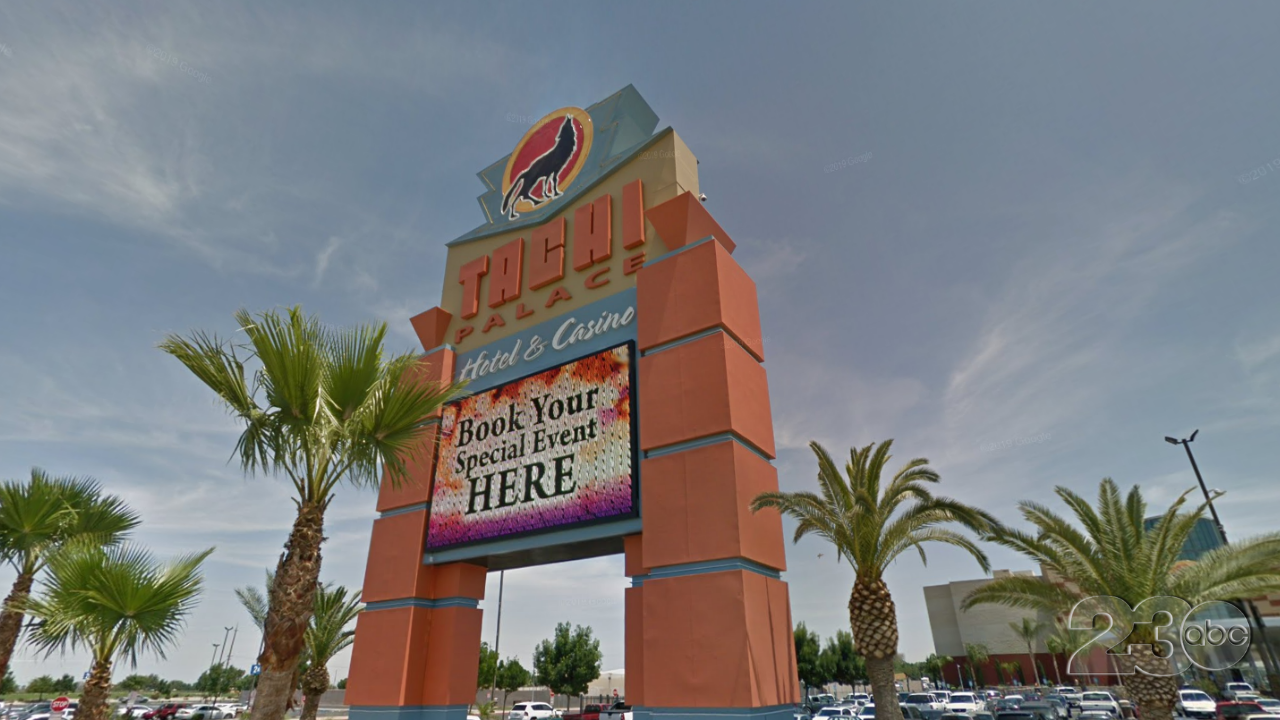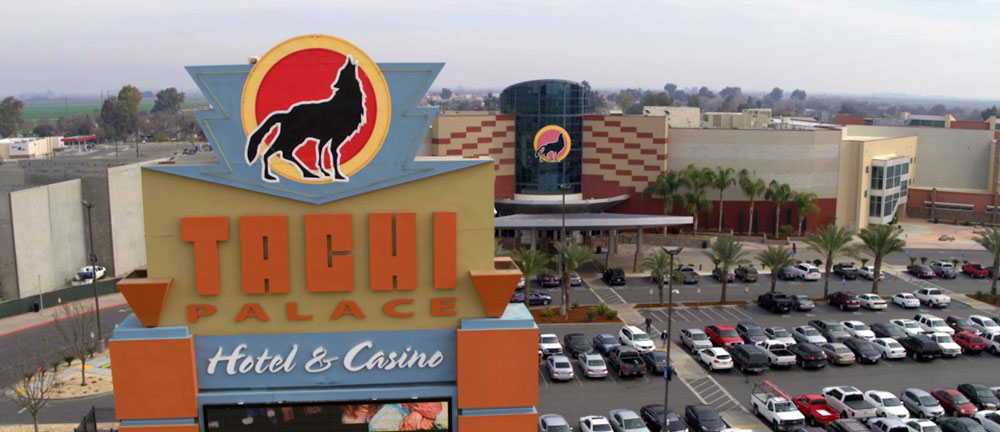Tachi Casino
- Tachi Casino Ca
- Tachi Palace Hotel & Casino Lemoore
- Tachi Casino Gas
- Tachi Casino Covid
- Tachi Casino Map
- Tachi Palace Casino Jobs
Tachi Palace offers many casino gaming choices from slots to poker and even bingo! The casino is always super clean, and safe because they have mots if security. We are here for the 4th of July/our 25th wedding anniversary and we are staying in the 2 story loft suite since my husband asked for the best room they have. Located in Lemoore, the heart of Central California, Tachi Palace’s hotel is near Visalia, Bakersfield, and Fresno, and the accommodations are nothing less than extraordinary. Standing seven stories tall with 255 smoke free guest rooms and suites, the hotel at Tachi Palace Casino Resort has been designed to make you feel perfectly at home. 287 reviews of Tachi Palace Casino Resort 'This review is for the Den nightclub on Friday nights inside the Tachi Palace Hotel & Casino. I have seen many bands in my day but nothing beats the musical stylings of the tribute band 'Mr Rude'. They are now playing the Den nightclub every Friday night. The new hotel at the casino is breathtaking!
Tachi Casino Ca
The Tachi-Yokut Tribe (Tribe) proposes future expansions of the existing Tachi Palace Casino Resort complex on tribal trust land located in Kings County, approximately 2.75 miles southeast of the City of Lemoore, California. A Tribal Environmental Assessment (TEA) was prepared consistent with Section 10.8 of the 1999 Tribal-State Gaming Compact and the Tribe’s Environmental Protection Ordinance to assess the potential for off-Reservation environmental impacts as a result of the Tachi Palace Casino Hotel Expansion Project (Proposed Project).
As described in detail in Section 2.0 of the TEA, the Proposed Project would result in the expansion of existing Tachi Palace Casino Resort located within the western portion of the Reservation, southwest of the intersection of Jersey Avenue and 17th Avenue. Expanded facilities would include approximately 43,518 square feet (sf) of additional gaming floor space, a new 35,000 sf bingo hall/event center, 200-room hotel tower, 20,000 sf conference center, three-story parking garage with 1,000 parking spaces, 1,250 surface parking spaces with associated infrastructure improvements, including additional on-site water and wastewater treatment facilities. Additionally, the Tribe is planning an expansion of the existing Yokut Gas station, including 24 new fuel dispensers (12 gasoline, 12 diesel), expanded on-site convenience store with 60 additional slot machines, and a three-car wash bay. The Proposed Project would employ an estimated 100 additional employees.
Coordinates: 36°14′10″N119°45′18″W / 36.23611°N 119.75500°W
Santa Rosa Rancheria is the reservation of the Santa Rosa Indian Community of the Santa Rosa Rancheria. It is located 4.5 miles (7.24 km) southeast of Lemoore, California. Established in 1934 on about 40 acres (16 hectares), the Santa Rosa Rancheria belongs to the federally recognized Tachi Yokuts tribe. It is the site of the Tachi Palace Hotel & Casino.[1] The population was 517 at the time of the 2000 United States Census and had increased to 652 by the 2010 United States Census. In 2010, 288 residents (44.2% of the total) were under 18 and 29 (4.4%) were 65 and over.[2]
Ruben Barrios was elected as the Tribal Chairman in 2009.[3][4] The previous Tribal Chairman, Clarence Atwell Jr., served in that position for 42 years and died in 2013.[3]

The Santa Rosa Rancheria expanded in size over the years to 643 acres (260 hectares) by the beginning of 2008. On May 28, 2008, then–Tribal Chairman Clarence Atwell Jr. and Dale Morris, Pacific Region Director of the U.S. Bureau of Indian Affairs, signed documents that added 1,163 acres (471 hectares) of trust land, thus enlarging the Rancheria to 1,806 acres (731 hectares).[5]
Tachi history[edit]
The Santa Rosa Rancheria belongs to the federally recognized Tachi-Yokuts Tribe. The Indians of the San Joaquin Valley were known as Yokuts. The word 'Yokuts' means people and the word 'Tachi' means mud duck.[citation needed] By the end of the 19th century, the Tachi Yokuts Tribe was split across the central and southern parts of California. The Yokuts were divided into tribes with each having a name, a language, and a territory. They are called the seed-gatherers because they did no farming at all in the days before Columbus. Their main food was acorns. The Yokuts also ate wild plants, roots, and berries. They hunted deer, rabbits, prairie dogs, and other small mammals and birds. They made simple clothing out of bark and grass. Their jewelry and headbands were made of seeds and feathers.[6]
Tachi Palace Hotel & Casino Lemoore
Citizenship[edit]
The Citizenship Act of 1924 gave all Indians American citizenship rights while allowing them to retain their tribal citizenship but it made little difference in the way they were treated by the government. As part of their integration into white society, the federal government sent their children to government schools, the religion was banned, and the teaching of the native language and culture was all but forbidden. Even after the land grabs and removal efforts had ceased, the damage had been done. The division of the native people, the suppression of the Indian culture, and the influence of white society left them with few ties to the past. Aspirations for the future were being destroyed by the resulting economic hardships and prejudice. For generations, the native people have tried to support themselves as seasonal field laborers. Government regulations produced long term economic stagnation on the reservation, resulting in 85% unemployment, a crumbling infrastructure, and a cycle of poverty which ground away at the hope for a better future for their children.[6]
Government[edit]
The Tachi-Yokuts Tribe has a Tribal administrator and her name is Janice Cuara. Her job as the Tribal administrator means she is responsible for the daily operations of the Tribal Government's Central Administration Building. The tribal government consists of approximately 165 regular employees and fourteen departments. The Department Directors supervised under the Tribal Administrator are: Personnel, Housing, Membership, EPA, Public Safety, Tribal Social Services, Cultural, Internal Auditors, IT, Maintenance, TYEEC ( Early Ed. Center), Recreation, Education, Elders Center, Finance, and Administration staff. Tribal Administrator is under the direction of the Tribal Council and shall carry out directives issued by the Tribal Council as required. Assists and advises the Tribal Council on matters pertaining to Tribal Budget and Program operations.[7] The Santa Rosa Rancheria Tribal council consists of six members. Ruben Barrios the chairman, Elmer Thomas the Vice-Chairman, Rafaella Dieter the Secretary, Dena Baga the Treasurer, Elaine Jeff and Patricia Davis as Delegates.[4] Update: As of June 1, 2018 Elmer Thomas and Rafaella Dieter has been recalled and removed from their position.[citation needed]
Self-sufficiency and self-determination are the two most important goals of any sovereign nation, which is why we have fought so hard to establish and maintain our own form of government and reclaim our right to determine our own future. Thanks to the efforts of strong American Indian leaders, the federal government gradually acknowledged our rights. In 1988, Congress passed legislation providing a means for rebuilding our economy, our pride, and our hope: the Indian Gaming Regulatory Act (IGRA).[8]
Rancheria[edit]
In 1934, the Santa Rosa Rancheria was established on about 40 acres of desolate farmland in Lemoore, California. Forty people lived on the reservation below poverty level, many living in tule huts, tin houses, old cars and chicken coops. The average education on the reservation was 3rd grade level, with field labor as the primary source of income. By the 1980s the Santa Rosa Rancheria had grown to approximately 200 members and 170 acres. Government programs such as Headstart, 638 funds, and an AA program were in place, and the average education increased to 8th grade level. Some HUD housing was built, but living conditions were still below poverty level for most members.[8]
Language[edit]

The traditional language of the tribe is the Tachi Yokuts dialect of Valley Yokuts.

References[edit]
- ^'Welcome to Tachi Palace Hotel and Casino'. Tachi Palace Hotel & Casino. Tachi Palace. Retrieved August 18, 2017.
- ^U,S. Census Bureau, Application Support Division, asd.internet.staff@census.gov, Last Revised August 6, 2013
- ^ abFinney, Judy (September 29, 2009). 'A long journey: Clarence Atwell Jr. retires as tribal administrator'. The Sentinel. Archived from the original on August 18, 2017.
- ^ ab'Council'. Tachi Yokut Tribe. Tachi-Yokut Tribe. Retrieved August 18, 2017.
- ^Yamashita, Eiji (May 28, 2008). 'Rancheria expansion'. The Sentinel. Archived from the original on August 18, 2017.
- ^ ab'Tachi History'. Tachi Yokut Tribe. Tachi-Yokut Tribe.
- ^'Administrator'. Tachi Yokut Tribe. Tachi-Yokut Tribe. Retrieved August 18, 2017.
- ^ ab'The Rancheria'. Tachi Yokut Tribe. Tachi-Yokut Tribe. Retrieved August 18, 2017.
Further reading[edit]
Tachi Casino Gas
- Cummins, Marjorie W. (1978). The Tache-Yokuts, Indians of the San Joaquin Valley. Pioneer Publishing Company. ISBN0-914330-24-1.